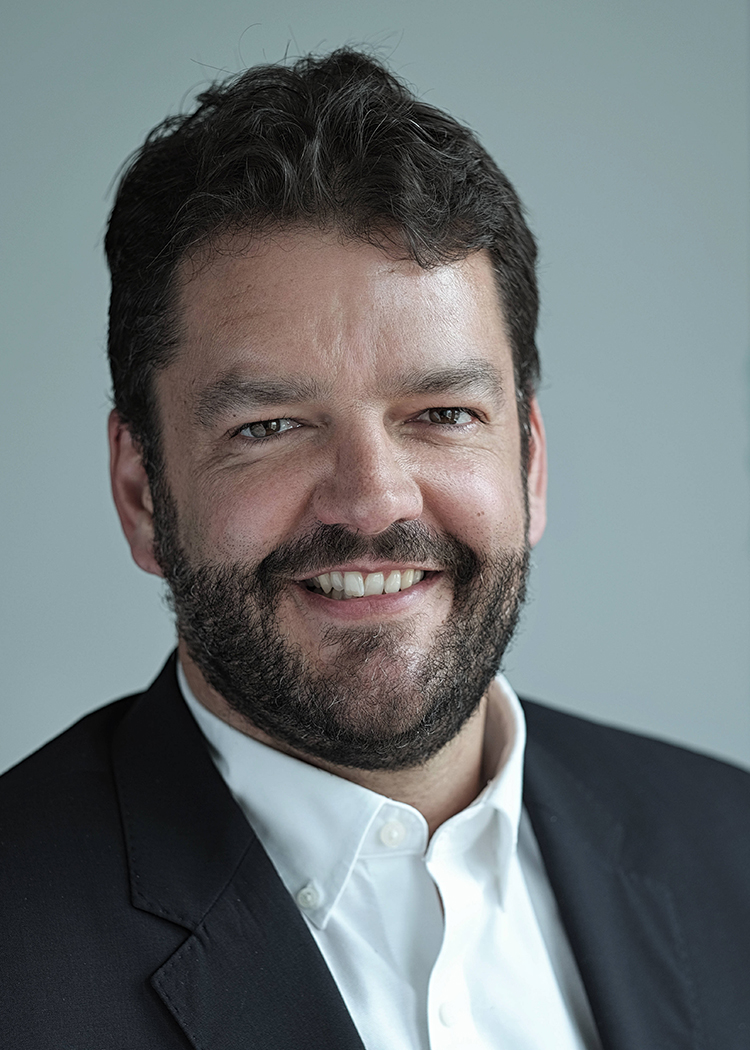Please describe the concept of the digital ecosystem. How does it apply to nature conservation?
We are experiencing an ongoing digital revolution that drives the digital economy. When focusing on nature conservation, the digital ecosystem attempts to achieve three main goals. Many public and private actors are generating data and technology that is fragmented. First and foremost, the digital ecosystem is an attempt to bring these activities together to avoid fragmentation, and make sure that the data collected and technology developed speaks to issues such as conservation. Once we have consolidated this data, the second goal is to determine how to use it to understand what is happening in nature in order to then drive massive structural changes in the economy. For example, using the data insights to inform markets, drive policy, change consumer behaviour, etc. in order to achieve sustainability. The final objective is to work with public and private actors and determine what safeguards to place around these partnerships. What are the business models we need to develop and how do we finance all of the above? Therefore, the digital ecosystem is looking at those three dimensions – bringing together all the data needed for transformation, effectively using the data to advance conservation and system-level transformation, and establishing safeguards and business models.
What are some of the major challenges of working with the digital ecosystem in the conservation sector?
I think the first challenge is that the conservation community has not yet come together with a common vision and digital strategy. I see many conservation groups developing their own data sets, platforms, or applications, without keeping the big picture in mind. We’re not really thinking about interoperability or making sure data can flow between our different digital ecosystems, and I would argue that this creates duplication, fragmentation and competition. The conservation community needs to consolidate its digital vision and we need to become more efficient with our spending resources instead of duplicating activities. Data infrastructure is a great example, and it would be helpful if all conservation and environmental entities could agree on a common back-end data structure and set of data standards so all our platforms could talk to each other and data could flow across them.
Once we have that consolidated vision, we could use it to drive behavioural change in the economy. I think the biggest opportunity we have to take advantage of is using our mobile phones to influence consumers to make better decisions about products and services by understanding the environmental impacts, the footprint of these products and impacts on biodiversity. If technology impacts decision-making at a personal level, how can we feed biodiversity data into that mix so that these algorithms are helping consumers take biodiversity information into account? There are many apps out there that already help consumers make better decisions on products, but I think the conservation community is not yet making this connection. For example, if we ask Amazon why they don’t have sustainability ratings on their website, it is because they don’t know what data to use. We need to provide them with the data feed and calculation in order to determine the biodiversity footprint.
How do you think knowledge, innovation and technology plays a role in supporting the development and implementation of the SDGs? How important is the use of technology for sustainable development?
I would say that many companies are already using the SDGs as an organising framework and core motivation for their work. I do believe that technology is fundamental to the SDGs but it isn’t the only thing that will drive them forward. Both high-tech and low-tech solutions will be needed, and there are a whole series of low-tech solutions available right now such as nature-based solutions that don’t require hard technology. These methods can in turn be enabled, scaled and better-identified using technology. If you look at some of the numbers that show how information and communication technologies can underpin the SDGs, we’re looking at 20-30 percent in terms of progress towards goals, and that is very significant.
“Knowledge, innovation and technology” will be a major theme of the IUCN World Conservation Congress this year. If you had one issue that you could have addressed at Congress, what would that be?
I would like Congress to address how to establish safeguards around public/private partnerships that are generating digital public goods on biodiversity data. If we want to work with different private sector actors to generate a global assessment of biodiversity, we need to be considering the safeguards around those partnerships. Again, what are the business models? Right now, it feels like the Wild West, where the private sector is coming into the conservation space with data and technology, and taking a large portion of the public sector’s traditional role. This isn’t necessarily a bad trend – potentially it is good because they have the resources, technology and scale to do this. However, we need to answer those key questions in terms of business models and safeguards, and determine who owns the data and how it is governed in the public interest.
I would also like to see how we could get a conversation going between conversation organisations to agree on the core conservation data sets that need to be generated around the world, and the core data infrastructure that we can co-use and collaborate around so that we’re not duplicating, but co-investing and sharing common costs. This will also need a discussion around financing these core costs. It would be great if the conversation community could get behind digital public good platforms like the UN Biodiversity Lab – so that we can build an authoritative one-stop shop for high value biodiversity data. This could go hand in hand with building an API for Earth framework – to allow this data to flow as easily as possible to decision-makers in the public and private sectors.
What digital transformation initiatives is UNEP itself currently leading?
We are in the early phase of our digital transformation journey as an organization. The UN Environmental Assembly only gave UNEP a mandate to work on digital transformation on 17 February 2021. Within the new programme, we aim to hardcode environmental sustainability data, metrics and goals into the platforms, algorithms and apps of the digital economy so that they become simple, seamless and automated.
Our first priority is to establish a Global Environmental Data Strategy and to build a state of the art data platform called the World Environment Situation Room.
On the 31st of March, we also launched the Coalition for Digital Environmental Sustainability (CODES) as part of the UN Secretary General’s Roadmap on Digital Cooperation. CODES will be co-championed by UNEP, UNDP, the International Science Council, the German Environment Agency, the Kenyan Ministry of Environment and Forestry, Future Earth, and Sustainability in the Digital Age.
The CODES co-champions will lead a global multi-stakeholder process and convene a series of events to firmly anchor environmental sustainability needs within the Digital Cooperation Roadmap and catalyse a digital planet for sustainability. CODES will develop a flagship report on the digital transformation and environmental sustainability nexus and work to develop an acceleration plan for building a digital planet for sustainability.
About the author

David Jensen is the coordinator of the Digital Transformation Task Force at the United Nations Environment Programme (UNEP). In this capacity, he is responsible for developing the new digital transformation strategy and for helping colleagues adopt new digital technologies, mindsets and business processes. The goal of the new strategy is to integrate environmental sustainability metrics, values and goals directly into the platforms, algorithms and apps of the digital economy to shift incentives and behaviors. UNEP will harness data and digital technologies to accelerate action and amplify human agency to achieve our climate, nature, and pollution action goals.
David is also serving as UNEP’s representative in the Coalition for Digital Environmental Sustainability (CODES) as part of the UN Secretary General’s Roadmap for Digital Cooperation. David has been advising the UN Science Policy Business Forum on digitalizing sustainability since 2018 and was the co-author of a flagship discussion paper entitled The Case for a Digital Ecosystem for the Environment. He also co-wrote a series of Medium articles on a Digital Ecosystem for the Planet (1, 2, 3) as well as a paper on Environmental Digital Public Goods. Within the digital space, David has co-founded numerous platforms including CODES, MapX, Earthschool, the UN Biodiversity Lab, and the Environmental Peacebuilding Platform.



